Top 10 Prophets, 👁👁 Prognosticators, & Visionaries #4
7) Jules Verne & 8) H.G. Wells ⚡

This is the 4th part of a 5-part series, a countdown in chronological order of the Top Ten Greatest Prophets of All Time.
We've made it up to the nineteenth century for this entry. Check out the older profiles first for greater context.
Discover the Oracle of Delphi and the Sibyls of Rome in Part 1 ⚡👇
Part 2 ⚡👇 The Maya and Hildegard of Bingen
Part 3 ⚡👇 Leonardo Da Vinci and Nostradamus
The next two visionaries on our chronological list created an enduring new genre of literature. One Frenchman, the other English, these Fathers of Science Fiction didn't consider themselves 'prophets' in the classic sense of the word; they didn't claim to know what events would happen before they happened... but what these men dreamed and wrote about inspired others, to the extent where many of their imaginings were eventually made real.

#7) Jules Verne – 1828-1905
Influential French writer Jules Verne wrote about the future with eerie precision. He foresaw cars cruising on freeways, bright electric lights, radios, television, helicopters, spaceships, submarines, the atomic bomb, color photography, fax machines (what he called “photographic telegraphs”), and computers (“totalizers”). None of these things existed as he wrote about them. The roads, even in Paris, were crude, rutted with horse tracks. It would be decades before electricity brought the world out of darkness.
The Industrial Revolution began in 1769 with the invention of the steam engine. Harnessing the power of steam allowed for large-scale production that had previously been inconceivable. People left farms, flocking to cities for the plentiful jobs in the many factories. New canals and roads would be required because of all the manufactured goods that needed to be transported. Railroads and steamships replaced horses and wagons. By the 1800s, regular breakthroughs were being made in science, with constant talk about new ideas and still greater innovations.
Jules Verne was born into that bustling age, in the year 1828. As a child, he loved literature and geography. He wasn’t that intrigued initially by the scientific advancements of his time, but he did have a deep fascination for machines. He visited construction sites and would watch machines operate for hours. At one point, he reluctantly decided to study law. He also tried working as a stockbroker. He wrote musical comedies. It wasn’t until he hit his mid-30s that he began writing the novels that would bring him fame.
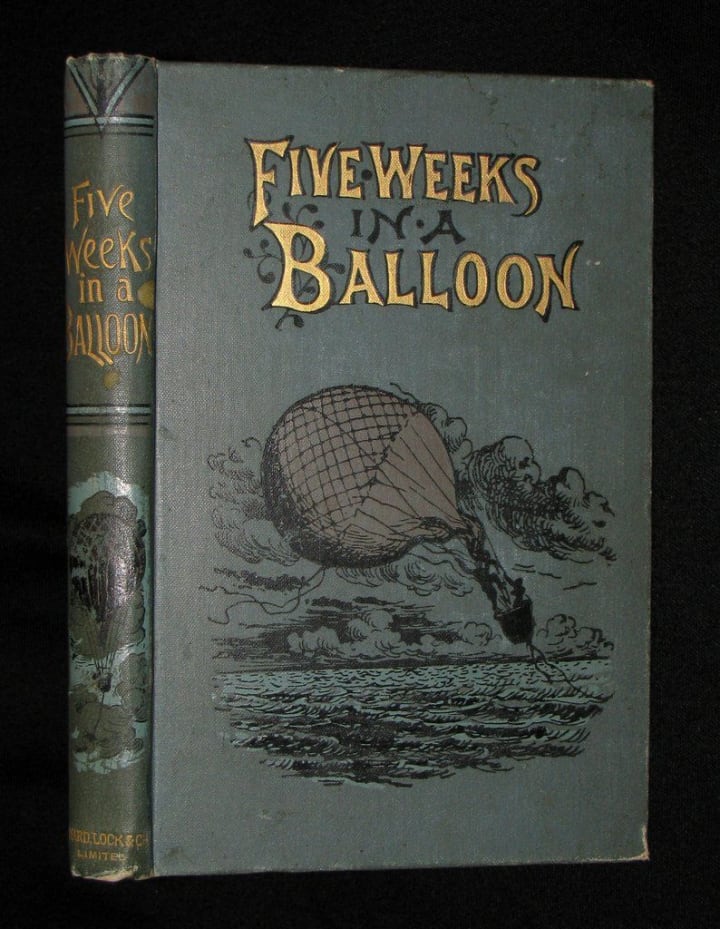
It was a book for young people that put him on the map: Five Weeks in a Balloon— a story of three explorers of Africa who soar over dangerous, uncharted regions in a balloon. Verne had never been to Africa and never been in a balloon. Africa was a mysterious place. Balloons were too tricky to control to be an efficient way to travel. But it all sounded thrilling to him, what he called, “a new kind of sensation.”

Just a few years later, he authored Twenty Thousand Leagues Under the Sea. Three decades before real submarines swept through the oceans, Jules Verne wrote…
The year 1866 was signalized by a remarkable incident, a mysterious and puzzling phenomenon, which doubtless no one has yet forgotten… For some time past vessels had been met by “an enormous thing,” a long object, spindle-shaped, occasionally phosphorescent, and infinitely larger and more rapid in its movements than a whale.

In that “enormous thing”, the enigmatic Captain Nemo took literary heroes around the world. And Jules Verne's fame seemed to follow, quickly spanning the globe.
Verne wrote more than a hundred great adventures after that, including epic tales like Around the World in 80 Days and Journey to the Center of the Earth. Over a third of his novels were set in the United States, even though Verne himself had only spent five days in America.
Verne was a quiet man— hardworking and passive. He wasn’t very pleasant to be around. A hypochondriac, he lived in an isolated country house and wrote in a study that was as simple as a monk’s cell. He hated bicycles, telephones, and wrote everything by hand rather than using the newfangled typewriter. He rarely traveled, although he did love being on his sailboat. He was a prolific reader.
Despite rarely going anywhere himself, the plots of his novels took his readers to the tops of mountains, the depths of oceans, and unexplored regions of space. His protagonists traveled to the North and South poles, to ice fields, volcanoes, flying islands, jungles, deserts, mine shafts, even asteroids.

In 1865, Jules Verne wrote From the Earth to the Moon. In the book, he describes a manned lunar flight being launched from where, of all places? The swampy terrain outside the city of Tampa, Florida! When Apollo 8 launched the first manned lunar flight in 1968, the three NASA astronauts were struck by all the many coincidences to Verne’s novel, including the smallness of the capsule, the condensed food they ate, and even the safe splashdown in the Pacific Ocean at the end of their mission.
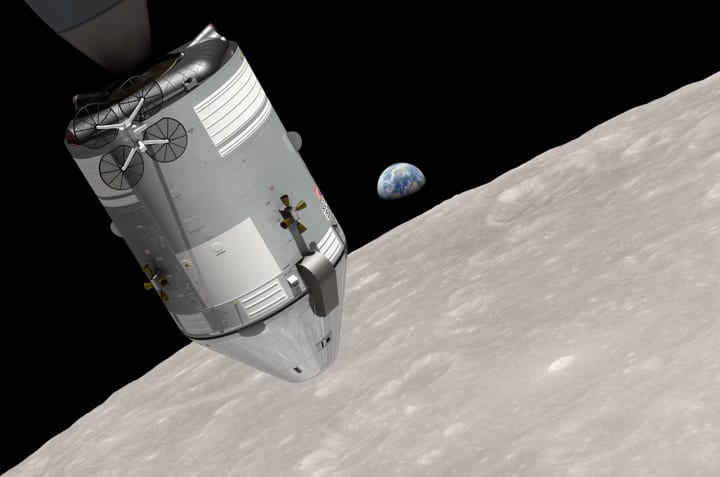
In 1863, Verne wrote a novel entitled Paris in the Twentieth Century. It was rejected by his editor, considered too grim for print. The book has a remarkable catalog of futuristic technology. Instead of horses, people drove “gas cabs” (cars) on streets made of asphalt. Silent, pollution-free trains were propelled by compressed air on elevated platforms. Skyscrapers used elevators to achieve heights of seventy to eighty stories. Electricity not only lit up department stores by night— it was also used as a means for capital punishment. Verne described the radio transmissions of music, and inventions that work like calculators, copiers, and fax machines.
While many aspects of that novel were inspiring, some of Verne’s other predictions were disheartening. Verne’s world was overpopulated. Homeless people wandered his streets. Machines replaced humans. Commercial advertising was inescapable. Factories flooded the air with pollution. Charismatic leaders led nations to war. Death rained down from flying killing machines. At the end of the tale, the protagonist of Paris in the Twentieth Century ends up crying himself into unconsciousness in a cemetery.

So many renowned authors were inspired by Verne. Sci-fi great Ray Bradbury wrote…
“We are all, in one way or another, the children of Jules Verne.”
A great many of Verne’s books have been adapted into movies and for TV. One of the very first motion pictures ever made was in France in 1902 and it was an adaptation of Verne’s From the Earth to the Moon. In 1952, Walt Disney made his version of Twenty Thousand Leagues Under the Sea, which also inspired rides in the Disney theme parks. Those Disney creations went on to influence the look of both Star Trek and James Bond. In 1993, the creators of the hit CD-ROM game Myst used the Verne story, The Mysterious Island, as their inspiration. The New York Times called Verne, “the patron saint of cyberspace.” Indeed, in one tale Verne wrote that citizens were no longer reading newspapers, but instead gathering information from a devise that sounds very much like the Internet.

One of the three Apollo 8 astronauts ☝ wrote Jules Verne’s great-grandson…
“Your illustrious grandfather… not only imagined what exploits were possible for man but even how they might be accomplished, down to the finest details. Who can say how many of the world’s space scientists were inspired, consciously or unconsciously, by their boyhood reading of the works of Jules Verne?”

#8) H.G. Wells— 1866-1946
In the mid-1800s, Great Britain was the most industrialized nation on Earth, leading the world in science, exploration, and invention. It also led in human hardship. The Industrial Revolution had been in full swing for a century, churning out air and water pollution, creating a labor force of children in factories, giving rise to filthy slums as people packed into cities, dissolving the bonds of family. The government did nothing for the destitute. England’s Queen Victoria held the throne from 1837 all the way to 1901, presiding over a strict, bland society. There was a lad who was born in 1866 who would envision an age beyond Victoria— a boy who dreamed of revolt.
“Bertie” Wells was a sickly child. His family was poor and underprivileged. He only attended school until he was fourteen, but he continued thereafter to read voraciously, especially any kind of science. After pursuing several menial jobs early in life, he eventually won a scholarship and studied to become a biology teacher. The first book of his that he saw published was A Textbook of Biology.
H.G. became obsessed with the future and quickly switched from nonfiction to stories about how certain inventions would affect mankind. He later described himself at that time as “writing away for dear life.” He began to amass a huge collection of rejection slips when he submitted to stuffy British publishers, who didn’t think the public was ready for this kind of science fiction.
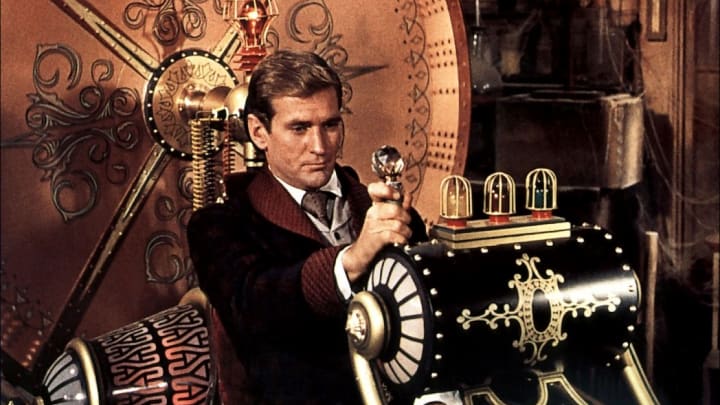
The first novel of his that finally was accepted and published was The Time Machine. Wells wrote about an inventor who traveled 800,000 years into the future, to a age when Earth was dying under a giant red sun. Underground, there lived evil workers who came to the surface periodically to eat the beautiful people. By the end of the tale, all that survives are monstrous crabs.
It was a bleak, depressing book, but it was an immediate hit. Wells never had financial worries again. The public was ready for his kind of science fiction after all.
And so Wells went on to write The Invisible Man, The Island of Doctor Moreau, The Shape of Things to Come, The First Man in the Moon, and other novels. He wrote more words than William Shakespeare and Charles Dickins combined.
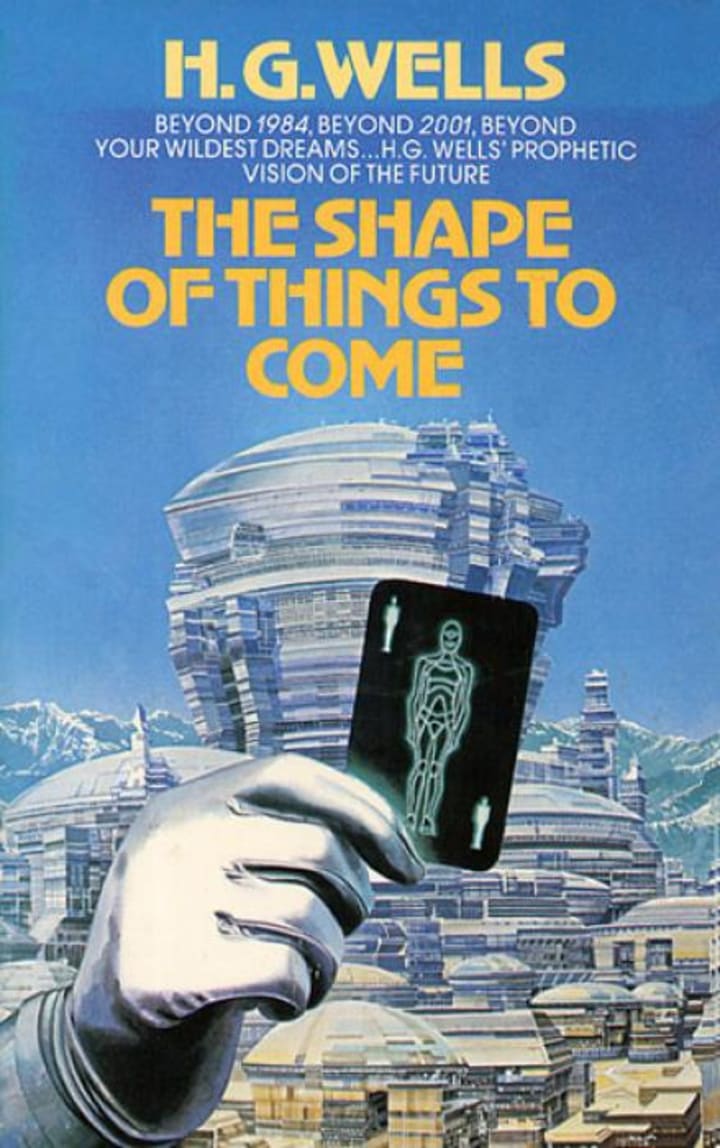
H.G. Wells was hailed as “the man who invented tomorrow.” Like Jules Verne, he is credited with being a co-creator of science fiction, what essentially are Tales of Technology. Both men found inspiration in the continual rush of discoveries being made in their time. The two authors seemed to want to distance themselves from each other, however. Verne accused Wells of bad science. Wells accused Verne of bad writing.
Wells wasn’t interested in predicting the future. He wrote to entertain, sometimes to crusade. But when he took his imagination on soaring flights, he had uncanny visions of things like radio, television, VCRs, and computers. He envisioned superhighways, overpopulated cities, and nuclear war.
He even made predictions about prophecies! He believed that one day scientists would be able to make forecasts as detailed as geologists’ summaries of the past.

In 1894, the planet Mars was positioned unusually close to the Earth. Newspapers in England reported observations about the planet and speculated about possible inhabitants there. From out of that real-life event, Wells conceived an entirely new kind of story— one of interplanetary conflict. Four years later, War of the Worlds was published.
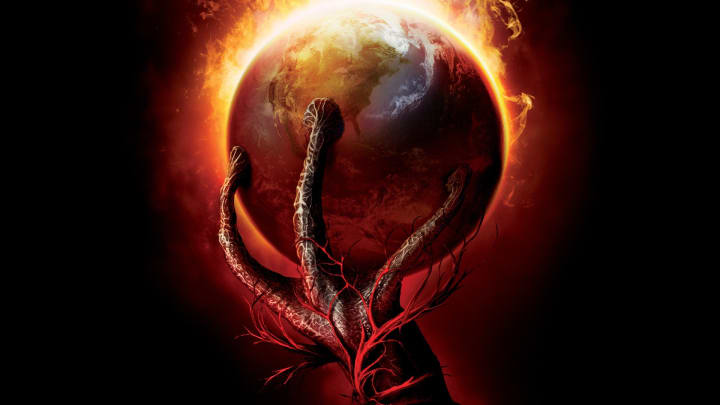
“No one would have believed, in the last years of the nineteenth century, that human affairs were being watched keenly and closely by intelligences greater than man’s…”
Martians were repulsive, with giant brains hardwired for evil. After exhausting their own planet, they turned their sights on ours, attacking England with their superior technology. Town after town fell before their might. Among the diabolical tricks in their otherworldly arsenal were gigantic laser guns, poisonous gas, and deadly robots. Humanity panicked, too terrified to fight back, and fear brought out the worst in people, proving we will do anything to survive.
Wells wrote the book in a documentary style, mentioning numerous locations that would be familiar to his readers. H.G. was in love with the newly invented bicycle, which allowed him to ride through many different neighborhoods, scouting for places to describe. He took personal delight in having his Martians wipe out districts that he disliked. He later recounted how he selected one area “for feats of particular atrocity” – “killing my neighbors in painful and eccentric ways.”

Poisonous gas, like that used by Wells’ invaders, eventually became a reality in World War I. H.G.'s most accurate predictions all seem to do with warfare. In other books, he imagined new uses for aircraft, including aerial bombing, tanks (which he called “land iron-clads), and even a nuclear weapon capable of decimating an entire city. Hungarian physicist Leo Szilard, one of the key figures in the development of the real atomic bomb, later credited Wells for his inspiration.

In 1938, forty years after War of Worlds publication, American actor Orson Welles read the famous opening lines of the story on the radio. The tale of invading Martians had been updated, all the references that were originally to British locations had been changed to sites in New Jersey. Much of the listening public thought that they were hearing the actual news— many believed that the invasion was real. Telephone lines were quickly jammed. Frightened listeners left their homes, pouring into the streets. At one point, the National Guard was nearly called out to restore calm. Radio was a relatively new invention. This was a unprecedented lesson in how powerful this mass medium could be.

H.G. Wells was a small, badly-dressed fellow who was known to often act unkindly, but he also had a reputation as a lady’s man. Among the notable women of his time that he had relationships with were birth control activist Margaret Sanger, novelist Rebecca West, and Soviet spy Baroness Moura Budberg. One lady said of him, “he made everyone else in the world seem a dull dog.” She called him, “the most bubbling creative mind that the sun and moon have shone upon since the days of Leonardo Da Vinci.”
(Leo is profiled in part 3 of this series 🦁. ⚡😁👍).
In love with his personal freedom, H.G. Wells saw marriage as unnecessary inconvenience, only meaningful if a person wanted to have children. In a straight-laced time, he rebelled against Victorian codes of behavior. He once said…
“Queen Victoria was like a paperweight that for half a century sat upon men’s minds, and when she was removed their ideas began to blow about all over the place haphazardly.”
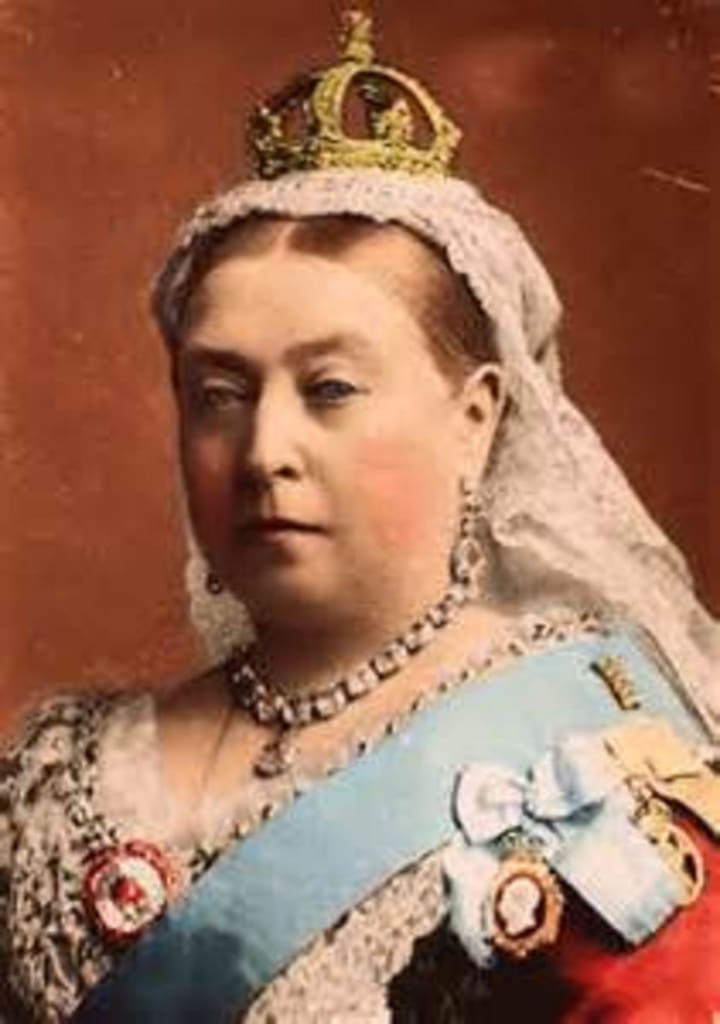
Among H.G. Wells other revolutionary ideas were discussions about population control, world peace, social equality, pollution, deforestation, and extinction of species. When he was young, he had high hopes for humanity, thinking with education we could adapt into higher life-forms. But the carnage of World War I shook his faith. And then World War II was even worse— with a death-toll exceeding sixty million. After that, Wells became very bleak indeed. He said, “The future is still black and blank—a vast ignorance.” He also believed mankind needed to face our destiny “with dignity and mutual aid and charity, without hysteria, meanness and idiotic misrepresentations of each other’s motives.”
(⚡ Doesn’t “hysteria, meanness, and idiotic misrepresentations of each other’s motives” seem like a fair description of the Internet?)
Wells believed disaster was inevitable for mankind… unless some dramatic change took place. The bombing of Hiroshima and Nagasaki by the United States in 1945— seeing the Atomic Age birthed in war was especially upsetting to him. He died a year later, at the age of seventy-nine.
At his funeral, H.G. Wells was eulogized as “the great prophet of our time” and “a man whose word has light in a thousand dark places.”
When asked in his final days what should be inscribed on his gravestone, Wells said…
“Damn you all: I told you so.”

That concludes Part 4. The 5th and final part of this list ...
.... is right here! ⚡👇😁👍
LIKE and share with any friends you think might enjoy this series.
⚡
ABOUT ME: I’m sixty-years old. A year ago, I started suffering from seizures. I haven’t worked since, and I can no longer drive. I have meds that mostly protect my brain from these assaults, but every so often, without warning, I’ll have a ‘breakthrough seizure’… and they wreak havoc on my memory. Since I can’t work and haven’t been able to secure disability, I currently have no income. If you tip or make a pledge to me, I would be eternally grateful… and I will do my best to entertain!
Thank you kindly for your support!
_____________Bolt ⚡

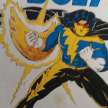




Comments
There are no comments for this story
Be the first to respond and start the conversation.